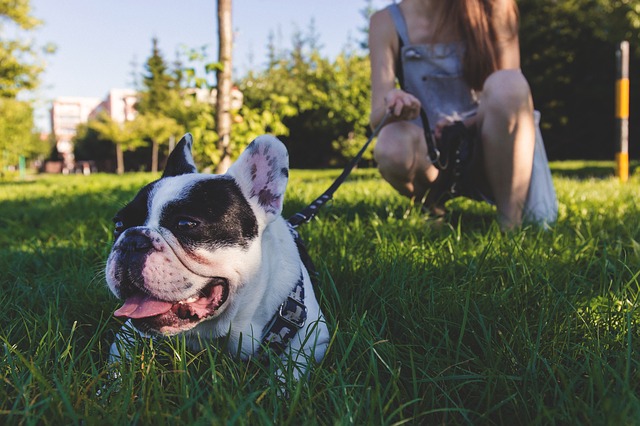Doggy Stress Relief
Teaching Your Dog “Settle”
 Do you ever feel stressed out? This deeply wired, biological response helps us survive potentially dangerous situations. While it’s completely normal to feel some stress from time to time, living with high levels can lead to a host of other problems, and the same is true in dogs.
Do you ever feel stressed out? This deeply wired, biological response helps us survive potentially dangerous situations. While it’s completely normal to feel some stress from time to time, living with high levels can lead to a host of other problems, and the same is true in dogs.
Unfortunately, it’s quite easy for dogs to become stressed. Sometimes, the causes are obvious, like exposing them to scary sounds, activities, or people. However, you can also increase your dog’s stress levels without intending to, even by giving confusing training commands. And some dogs have higher levels of stress because of their genes.
Identifying Stress in Dogs
It may seem like our canine companions lead lives of luxury, but they can actually experience high levels of stress, too. Common signs of stress in dogs include:
- Whining or barking
- Yawning, licking, or drooling
- Pacing, shaking, or panting
- Refusing food
- Shedding
- Blinking rapidly or having dilated pupils
- Pinning back ears or tucking tail
- Cowering, shifting weight to hind legs, or becoming rigid
- Hiding, avoidance, or trying to escape
- Urinating or loss of bowel control
Fortunately, teaching your dog to “settle” can help.
Teaching “Settle”
Whether your dog struggles with fear and anxiety or not, teaching them to settle can be one of the most useful skills you impart as a pet parent. That’s because training your dog to lie down in a relaxed position on command can provide a powerful calming effect.
Remember, never try teaching your dog a new skill when they are exhibiting signs of stress. This is not a positive learning experience and could only heighten their anxiety. Instead, try to remove them from the stressor and let them regroup in a quiet space. Likewise, make sure your dog has plenty of exercise to burn off excess energy before beginning a training activity.
1. Getting Started
Sit in a chair and invite your dog to lie down beside you – lure them to the ground with a treat, if needed. As soon as they lie down, use a clicker to mark the action or say, “Yes!” Then give them a yummy treat. Continue quickly marking the action and rewarding them again before they can get up.
Repeat this several times before saying “Release!” or “Free!” and encouraging them to stand up.
 NOTE: Your dog should be lying in a relaxed position during this step, not ready to spring back to their feet.
NOTE: Your dog should be lying in a relaxed position during this step, not ready to spring back to their feet.
2. Make It Harder
When your dog will stay relaxed at your feet for at least 20 seconds, start adding the word “Settle” before asking them to lie down. Continue increasing the duration of their “Down” until they stay relaxed at your feet for an extended period. End the exercise with “Release!” or “Free!” and marking the action.
NOTE: Be clear with your instructions by saying, “Settle” and “Down.” With practice, your dog should lie down and relax the moment they hear the word “Settle.”
3. Take It On the Road
One of the best things about “Settle” is its flexibility. Once your dog reliably settles at home, try adding more challenges by practicing on walks, restaurant patios, or other busy areas with more distractions. Remember, to increase the difficulty slowly to get best results!
Trouble Shooting
Does your dog refuse to settle? Do they refuse to settle if others are near? Just like all new behaviors, this one takes time, practice, and patience! Here are a few questions to ask yourself to help:
- Did I exercise my dog before trying to practice?
- Did I increase the length of “Settle” time too quickly?
- How can I add gradual bits of activity to my training sessions to increase the challenge?

